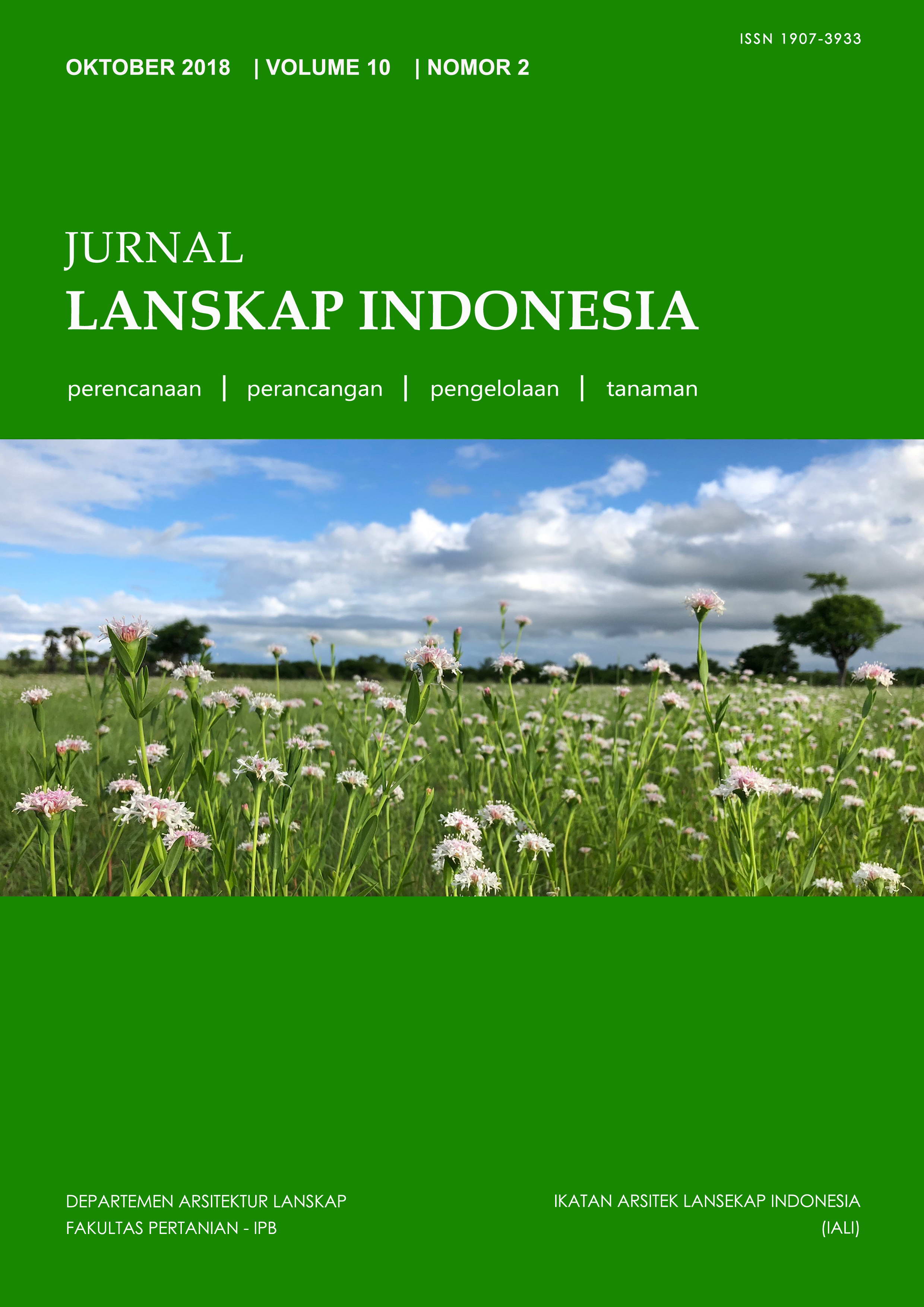PERENCANAAN LANSKAP KALIURANG SEBAGAI KAWASAN WISATA TERPADU DI YOGYAKARTA
Abstract
Kaliurang has tourism potential and become the third most visited tourist destination in Yogyakarta after Parangtritis Beach and Prambanan Temple. This potential can be used to make Kaliurang as one of the revenue sources of regional income. For that there should be an effort to maintain the sustainability of Kaliurang as a integrated tourist area. This study aimed to plan Kaliurang landscape as a integrated tourist destination area in Yogyakarta. This study was conducted in Kaliurang with an area of 339,56 ha. The method used in this study was planning method developed by Gold (1980). The results showed that Kaliurang has potential to be planned into integrated tourist destination with physical factors such as topography, climate, land cover, high biodiversity, and existing tourism conditions. Kaliurang as a tourist area has a high quality natural scenery but supply and demand aspects as a tourist area has still low. Kaliurang has an area with a value of tourist suitability for the development of tourism activities amounted to 238.97 ha and divided into two spaces, tourism object space and tourist support space with an area of 207.65 ha and 31.31 ha respectively. The tourist space has 9 theme activities and supporting tourist space has three theme activities.
Keyword : Kaliurang, landscape planning, natural mountains, tourism, tourist destination area
Downloads
This journal permits and encourages authors to post items submitted to the journal on personal websites or institutional repositories both prior to and after publication, while providing bibliographic details that credit, if applicable, its publication in this journal. However, after the article is submitted and published in this journal, it is fully copyrighted by the Jurnal Lanskap Indonesia or JLI. If excerpts from other copyrighted works are included, the author must obtain written permission from the copyright owner and give credit to the source in the article. Then, the writer or reader is allowed to copy, share, and redistribute articles/material in any form. But it must still include the appropriate source and credit because the article in this journal is licensed by Creative Commons Attribution 4.0 International License (CC BY 4.0).
I. Proposed Policy for Journals That Offer Open Access
Authors who publish with this journal agree to the following terms:
- Authors retain copyright and grant the journal right of first publication with the work simultaneously licensed under a Creative Commons Attribution License that allows others to share the work with an acknowledgement of the work's authorship and initial publication in this journal.
- Authors are able to enter into separate, additional contractual arrangements for the non-exclusive distribution of the journal's published version of the work (e.g., post it to an institutional repository or publish it in a book), with an acknowledgement of its initial publication in this journal.
- Authors are permitted and encouraged to post their work online (e.g., in institutional repositories or on their website) prior to and during the submission process, as it can lead to productive exchanges, as well as earlier and greater citation of published work (See The Effect of Open Access).
II. Proposed Policy for Journals That Offer Delayed Open Access
Authors who publish with this journal agree to the following terms:
- Authors retain copyright and grant the journal right of first publication, with the work after publication simultaneously licensed under a Creative Commons Attribution License that allows others to share the work with an acknowledgement of the work's authorship and initial publication in this journal.
- Authors are able to enter into separate, additional contractual arrangements for the non-exclusive distribution of the journal's published version of the work (e.g., post it to an institutional repository or publish it in a book), with an acknowledgement of its initial publication in this journal.
- Authors are permitted and encouraged to post their work online (e.g., in institutional repositories or on their website) prior to and during the submission process, as it can lead to productive exchanges, as well as earlier and greater citation of published work (See The Effect of Open Access).



























